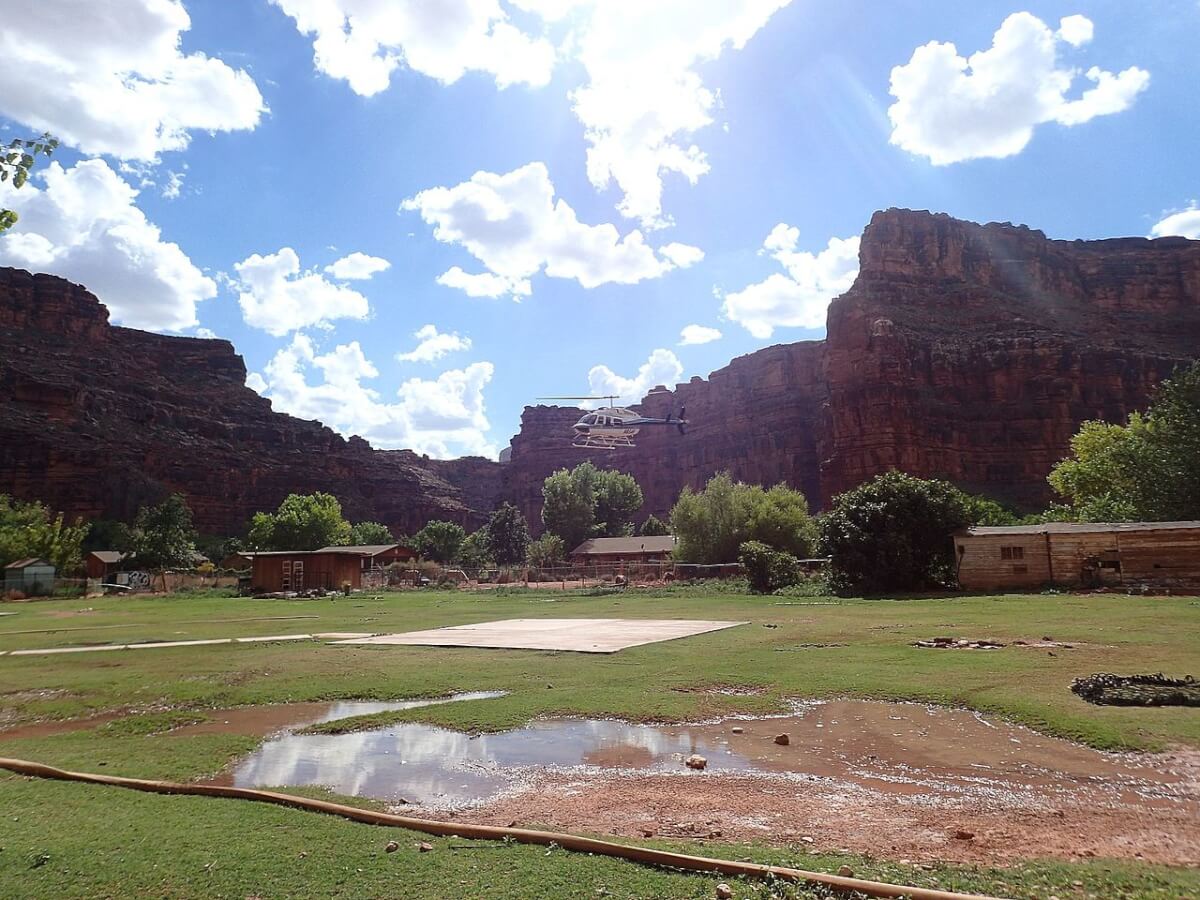A flash flood on July 12 sent a deluge of water down Arizona’s Grand Canyon, sending tourists running for high ground and requiring evacuation by emergency workers.
Rescue workers evacuated most of the 200 tourists in the Havasupai reservation, deep within a gorge of the Grand Canyon.
Everyone was accounted for and there were no reports of injuries or fatalities.
Heavy rain fell on the evening of July 11 and before dawn of the following day, flooding a shallow creek in the area, according to tribal spokeswoman Abbie Fink.
The Havasupai reservation lies within a steep-walled canyon with a flat bottom.
Water came up around people’s tents and some of the tourists quickly warned the other campers to flee. Some climbed trees and others used nearby caves as temporary shelters.
One of the tourists, Benji Xie, ran up to a bathroom. “The sky opened up. Winds started blowing, sand was blowing everywhere and rain was coming down in sheets,” he told the Associated Press.
The tribe helped in getting dozens of tourists out of the camping area bellow the village of Supai with the use of ropes and ATVs.
A helicopter was also used to extract five tourists at a time from the village to a parking lot at the head of the eight-mile trail to Supai, according to Fink.

During the monsoon season, rain can fall heavy and fast, making flood waters rush unexpectedly through usually dry canyons and washes. Last September 2015, seven people died at Utah’s Zion National Park after they were trapped during a flash flood.
Brian Klimowski of the National Weather Service in Flagstaff said the agency sent the tribe a flood advisory for the area at 6:30pm of July 11.
The heavy rain poured around 45 minutes later and a stream gauge recorded a four-foot rise in Havasu Creek. The creek’s water levels rose again at two in the morning of the following day.
In both cases, the water receded within two hours, Klimowski said.
The canyon, which is accessible only by foot, helicopter or a mule ride, will be closed to tourists for at least a week, according to Fink. Officials will also start assessing the damage to determine when the area is safe enough to allow tourists back in again.


